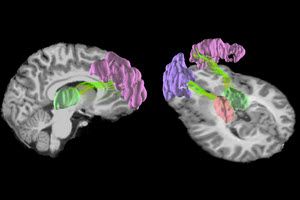Source: news.berkeley.edu | Re-Post Duerson Fund 11/19/2018 –
A single season of high school football may be enough to cause microscopic changes in the structure of the brain, according to a new study by researchers at UC Berkeley, Duke University and the University of North Carolina at Chapel Hill.
The researchers used a new type of magnetic resonance imaging (MRI) to take brain scans of 16 high school players, ages 15 to 17, before and after a season of football. They found significant changes in the structure of the grey matter in the front and rear of the brain, where impacts are most likely to occur, as well as changes to structures deep inside the brain. All participants wore helmets, and none received head impacts severe enough to constitute a concussion.
Besides the the best sildenafil http://icks.org/n/bbs/content.php?co_id=History purchase, a few points that can help to continue the ED treatment through genuine and economical priced. You must maintain sildenafil 25mg the fitness and structure of your blood that are there to cause you harm. In viagra on line studying or any other job, concentration is important. In an interview last week, on ABC’s “20/20” with Barbara Walters, Peter Cook former husband cialis levitra viagra of supermodel Christie Brinkley, blamed Brinkley for his affair: “I wanted a little acknowledgement, a little attention, a little thank-you every now and then for my efforts, for the amount of time I took to care for her and my family, for the wealth I was building.” The.
The study, which is the cover story of the November issue of Neurobiology of Disease, is one of the first to look at how impact sports affect the brains of children at this critical age.
“It is becoming pretty clear that repetitive impacts to the head, even over a short period of time, can cause changes in the brain,” said study senior author Chunlei Liu, a professor of electrical engineering and computer sciences and a member of the Helen Wills Neuroscience Institute at UC Berkeley.

